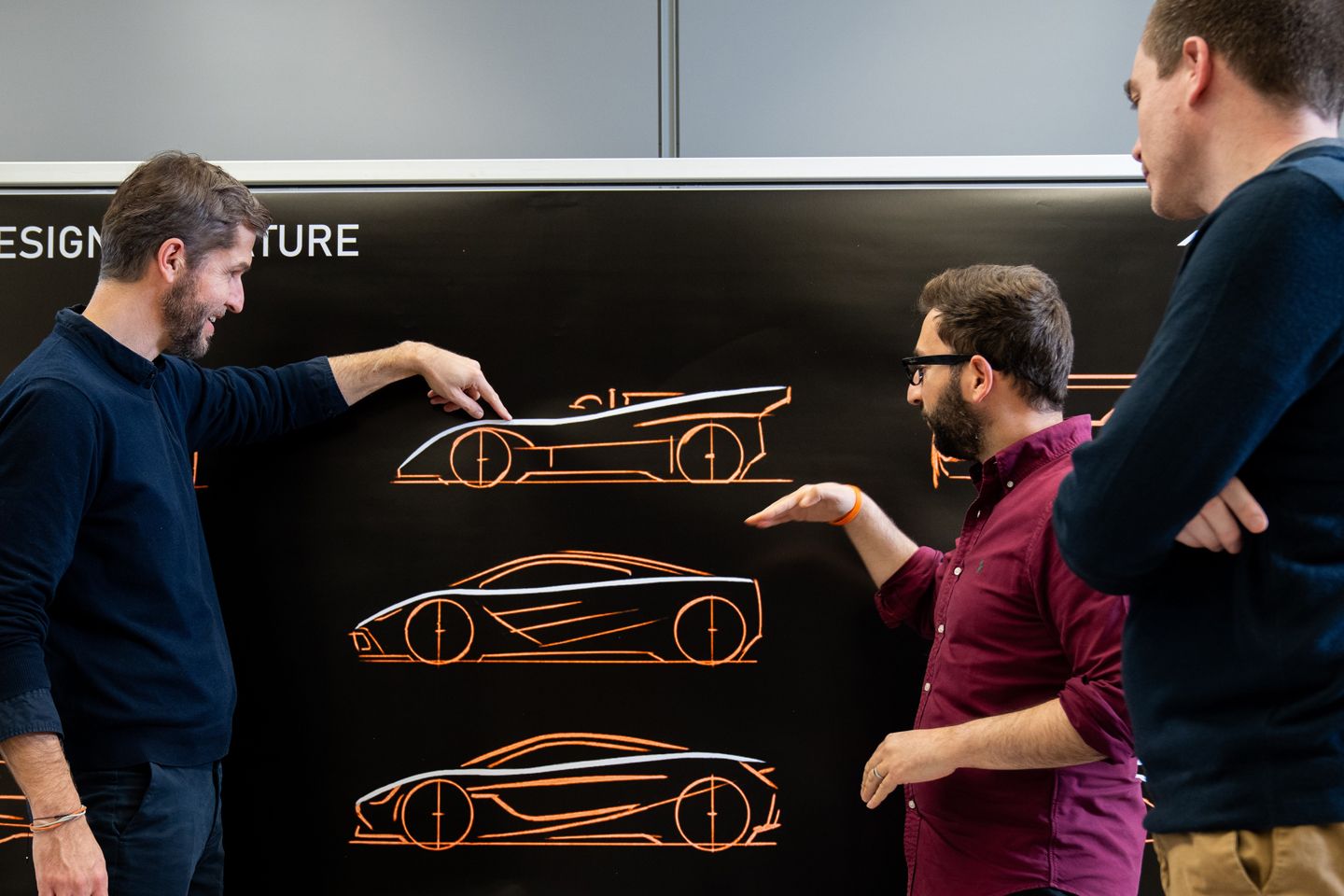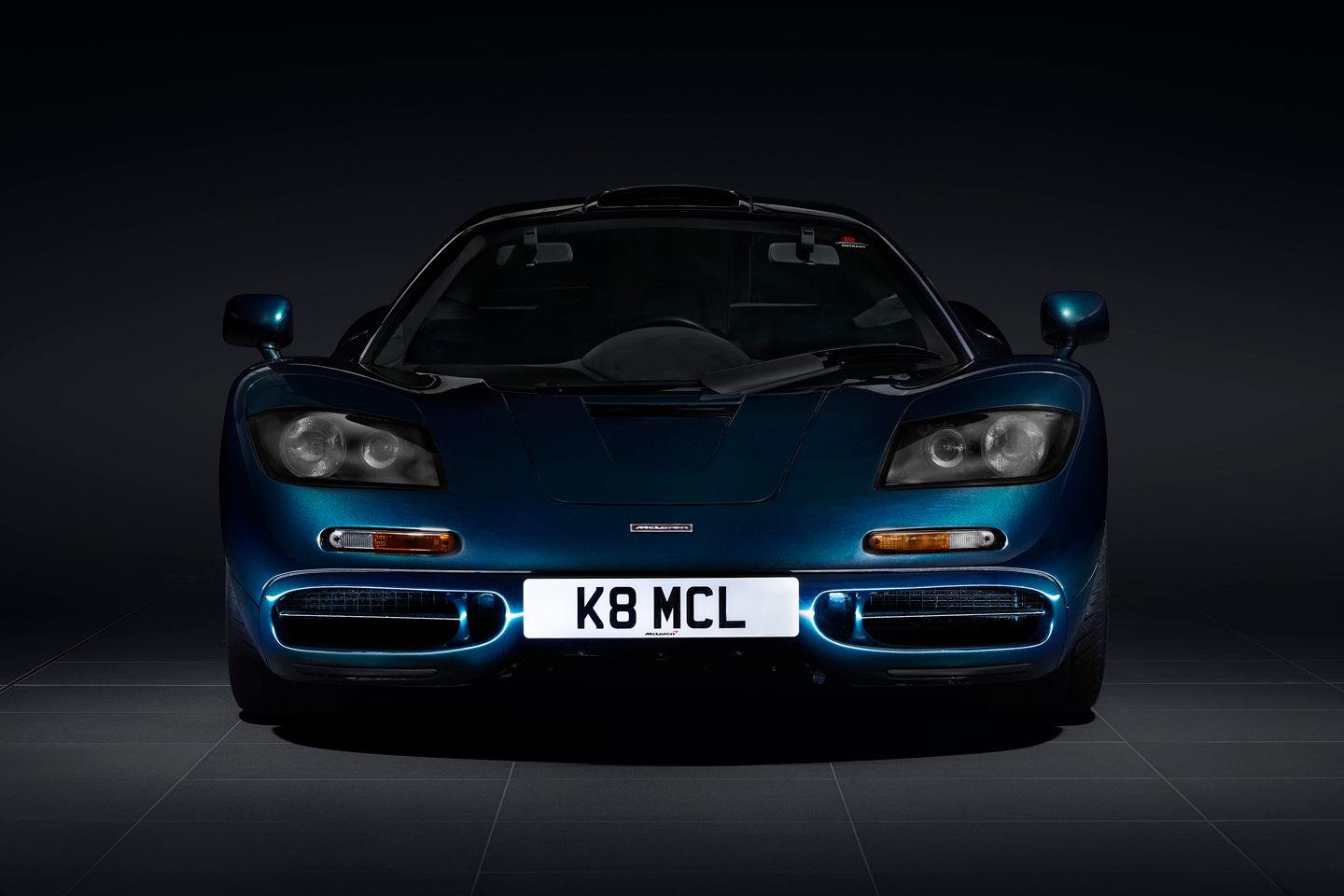McLaren goes back to the future with design DNA
Tobias Sühlmann previews new design language for McLaren's expanding portfolio

Tobias Sühlmann has a problem. Following notable stints at Volkswagen, Bugatti, Aston Martin and Bentley, the designer has returned to McLaren (he was previously responsible for the Solus GT) as its Chief Design Officer. The problem is that McLaren, having finally ironed out all the kinks in its capital structure thanks to the sovereign wealth fund of Bahrain (which took full ownership of the brand last week), stands at the edge of a brave new world - one where it will be required to think not just about the form a battery-powered supercar might take, but also what an entire range of hybrid and fully electric McLarens might look like. Including those with back seats.
The thing is, Tobias Sühlmann doesn’t come across as a man with a problem. And that’s because in the couple of hours PH spent in his company earlier this week, he wore a huge grin. Yes, it is the grin of a chap who has landed in his ‘dream job’ - but also of someone who evidently feels like they’ve been presented with the opportunity of a lifetime. Sühlmann’s CV is notable enough to include several efforts worthy of any designer’s greatest hits, but he has never been tossed the ball at such an early stage in the genesis of an entire portfolio - nor, one suspects, been given such free reign to stamp his ideas on what a bunch of world-famous cars are going to look like for at least the next decade.
Unsurprisingly, then, having arrived in Woking last September, Sühlmann has been busy. His previous work on the V10-powered Solus GT means he is no stranger to McLaren’s way of working, but he admits that car was more a case of ‘seeing how extreme we could make it’, rather than pointing to where the firm might be headed. Now, with the weight of history firmly on his shoulders, the designer has spent a lot of time roaming the foyer and workshops at the McLaren Technology Centre and imbibing not just the automotive legacy since 2010, but also 60 years of extraordinary racing heritage.


His job now is to mesh that existing DNA with the future requirements of a brand that has occasionally struggled to differentiate between its products. This will be more challenging in some respects than others. You would imagine McLaren already has a decent handle on what its next hypercar will look like (just last week it was busy trademarking names) but beyond this year the challenges and possibilities afforded by secure long-term investment and the increasingly likely prospect of a new technical partnership are myriad. This is precisely what a design philosophy is for. And why you hire a designer of Sühlmann’s calibre to create one.
“Racing is in our DNA, and beauty flows from this relentless pursuit of performance. We are deeply inspired by six decades of McLaren history, but we are not rooted in our past,” noted Sühlmann. “Our Design DNA will build McLaren into a brand that delivers 60 years of motorsport heritage in incredible lightweight supercars and beyond. A new era, with new vehicles, more product differentiation, and with Performance by Design at the heart of it.”
‘Performance by Design’ might not be the most invigorating description the manufacturer has ever rolled out, but its straightforwardness is likely intentional. Certainly, the five theoretical pillars that underpin it make a lot of sense (Epic; Athletic; Functional; Focused; Intelligent) when considered in the light of McLaren’s long-running preoccupations, although Sühlmann is at his most animated when discussing the three design signatures that have resulted from his deep-dive into the soul of MTC.


The design image above is worth a thousand words, but in essence they break down into a front view defined by ‘two main, symmetrical elements with horizontal orientation and a low nose’ - almost always manifested as large air intakes in McLaren’s back catalogue - and, to the side, the so-called ‘Performance Line’, that downward slope of a shoulder line recognisable in everything from a Cam-Am racer to the McLaren F1. To the rear, there’s the concept of an ‘open back end’ (i.e. what tends to happen when you’re keen for very hot air to exit a car as quickly as possible) although it’s the straight-line graphic that people tend to notice.
Not exactly a step-by-step recipe for creating era-defining cars of any stripe, you might think - but the whole point is that the signatures deal in very broad strokes. Sühlmann is defining an ethos here, not showing us the small print. That will come later; for now, McLaren clearly wants to underline that its hitherto unbreakable focus on ‘purity of purpose’ will not leave the building just because the cars it builds are about to evolve. And to listen to its new Chief Design Officer talk ardently about simplicity and engineering authenticity and the need for driver-centric solutions (especially the idea that analogue elements are worth hanging onto) is to hear the beginnings of a solution. Let’s hope the smile says it all.








Gassing Station | General Gassing | Top of Page | What's New | My Stuff



